The content of the article
A long time ago, many terrestrial fauna representatives left the land and moved into the sea. It should be noted that they are remarkably adapted to living in salt water. The water snake, belonging to the species bicolor pelamid, is a permanent inhabitant of the aquatic expanses. It can never be seen on land, because it never crawls out of the water. This representative of the snake kingdom has a pronounced maneuverability and can move not only forward but also backward. Any professional swimmer will surely envy that art with which she moves in the thick of the water.
These snakes rest in groups. It is very interesting to watch such an action. They lower the tail and head, or are in the place where there is enough algae. There they lie in wait for their prey. A pelamid has a rather powerful tail, with the help of which for a long time it is able to hold various objects that float in water.The literature describes a case in which pelamide held a lantern with a tail weight of 8 kg for a long time.
Under water, this snake can safely be up to 90 minutes, but it goes to hunt for surface water.
External data
The snake has a medium size. Its length usually does not exceed 1 meter. The body is covered with rows of scales, the total number of which reaches 47-69 pieces. From the inside, the snake is covered with abdominal plates, the number of which can reach 406 pieces. Two-colored snake is called because its body has a double color. The upper part is characterized by the presence of dark tones. The lower surface of the body has a yellow color, which creates a pronounced distinct contrast. The transverse rings over the entire surface of the body form a peculiar pattern. Nature did not accidentally give the snake such a color. She is frightening.
The tail is characterized by the presence of light tones with the presence of large black spots. From the sides you can observe the presence of a jagged pattern. It should be said that in various individuals belonging to this species, there is marked variability in color.It should be said that females are somewhat larger in size than males.
When the snake, while in an ambush, still catches its victim, it tries to kill it immediately. Her poison helps her in this, which is characterized by a neurotoxic effect. The poison is very toxic. For the victim, the lethal dose is only 130 mg / kg body weight. Snake venom is also deadly to humans. Another thing is that pelamid when meeting with a person does not show even the slightest signs of aggression. But in order not to provoke an attack on the man, you should not get too close to her.
How dangerous is a snake?
According to the degree of toxicity, poison of pelamid exceeds cobra. Just one small drop is enough to kill three adult men. The effect of poison is associated with paralysis of the respiratory center. A person simply cannot breathe if he is bitten by this snake. In addition, there is simply hellish pain in all muscle groups. It is characteristic that even after the administration of the antidote, this pain persists for a long time.
Special features
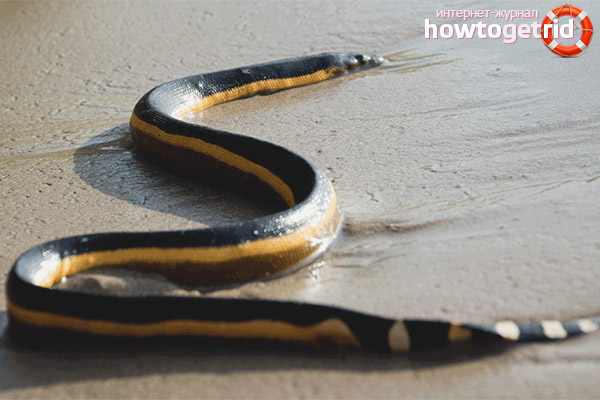
Of course, the snake has its enemies.Protection from them is provided by the odorous secret produced by the anal glands. The place of its accumulation is an elongated bag, which has no sphincter. The secret is spontaneous when danger approaches.
It is interesting to observe how pelamida sheds. It is as if tied in a knot and begins to rub with various parts of the body together.
Breeding
Distribution and subspecies
It is safe to say that of all sea snakes, two-colored pelamida has the widest distribution area. Its habitat is the Indian and Pacific Ocean, the coast of the African continent. It was possible to meet her in the Russian territorial waters. This could be observed at a time when sea water became much warmer.This contributes to the attraction of a large number of southern fish, for example, sardines, ivasi, and they, as is known, constitute the food base of the horsefish.
There are no subspecies of this snake.
The difference between the book and other terrestrial snakes is in its bright color. This species can be distinguished from similar marine representatives by the way nostrils and plates are located.

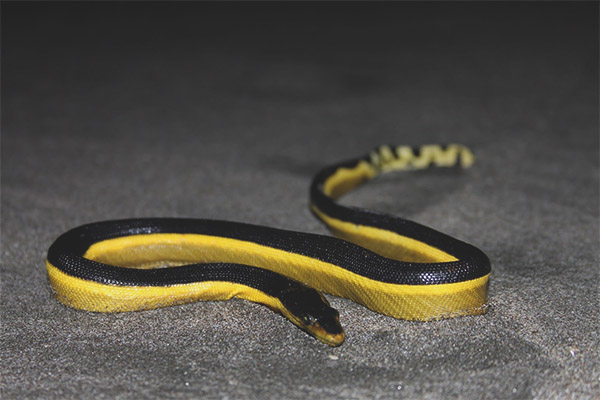

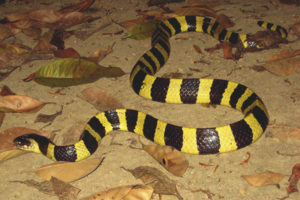

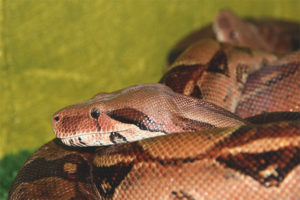
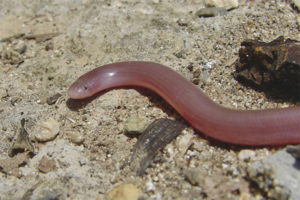
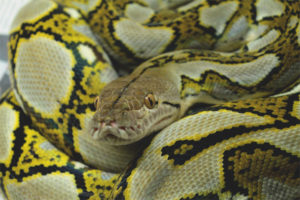
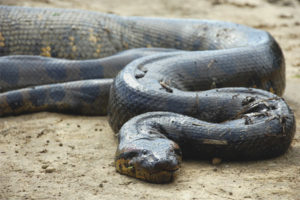
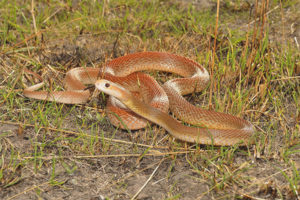
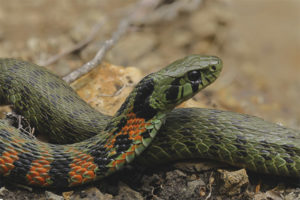
To send